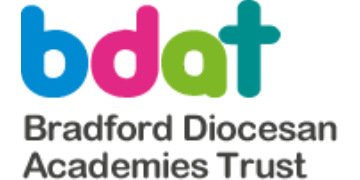Ministers have been asked not to slash National Tutoring Programme (NTP) funding while it is still taking hold in schools, as new figures show poorer pupils are nearly catching up with wealthier peers in terms of tuition.
Research published by The Sutton Trust shows in 2021-22 the proportion of pupils accessing any form of tutoring was almost level between the most and least deprived.
Of year 11s from the highest-earning households, 39 per cent received tuition, 20 per cent of which was private.
But 37 per cent of year 11 pupils from households in the lowest quartile of earners also received tuition.
This was despite just five per cent receiving private tuition.
Call for long-term tutoring funding
The catch-up scheme, which provides subsidised tutoring, was launched to help primary and secondary pupils catch up on missed learning from the pandemic.
But the proportion of costs that are covered for schools is due to drop from 60 per cent this academic year to 25 per cent in the next. Subsidies will then end in 2024.
The Sutton Trust wants this planned cut to be postponed in order to give tutoring “more time to embed fully” into the system.
It added that longer term, government should consider additional funding for tutoring or ways to incentivise schools to use pupil premium funding to cover the costs.
It also warned that during the early focus of the programme, “quality provision was drowned out by an overriding to scale up”.
Sir Peter Lampl, Founder and chair of the Sutton Trust and the Education Endowment Foundation, said while there had been issues with delivery, the NTP had “changed the landscape of tutoring”.
“It’s giving young people the opportunity to receive tuition who would never have been able to afford it. Rather than treating it as a short-term catch-up programme, it should be part of an ongoing national effort to tackle the attainment gap.”
NTP helps to even out regional differences
The research also shows regions with the lowest rates of private tutoring, such as the north east, East Midlands and Yorkshire, have the highest rates of in-school tutoring take-up.
London was “substantially” above other regions in private tutoring rates – at 27 per cent, compared to the north east, where the figure was 12 per cent.
In Yorkshire and the East Midlands the rates were 15 and 14.3 per cent respectively.
Yet in terms of school-tutoring, the north east had the highest regional rate, at 35.1 per cent. The rate in London was 28.5 per cent, while the rates in Yorkshire and the East Midlands were 30.5 and 28.9 per cent respectively.
In policy recommendations to the government, the Sutton Trust said the scheme should be seen as a “core part” of the school system going forward, with delivery refocused in the long-term “to tackle the attainment gap”.
Government data published in the autumn shows the attainment gap between disadvantaged secondary pupils and their better-off peers had widened to its largest level in 10 years.
But the Sutton Trust warned that in order to tackle the attainment gap, the tutoring scheme needed to be more clearly targeted at disadvantaged pupils.
There was no pupil premium target for tuition’s partner’s inaugural year and schools had discretion on who needed tutoring the most, but with a focus on disadvantaged pupils.
An independent evaluation of the scheme previously said the NTP had “failed to achieve its focus”.
















I was delighted to see this positive news item about the National Tutoring Programme.
As the cornerstone of the government’s post-pandemic catch up strategy for schools, the National Tutoring Programme (NTP) aimed to remove the postcode barriers to high quality tuition & interventions.
Equally by delivering subsidised tuition through schools it served to address the imbalance of tuition provision between those households who could afford it and those that couldn’t. Tuition provision was once the reserve of middle class households but as research from The Sutton Trust shows that in 2021-22 this is no longer exclusively the case. This trend must be continued.
At Connex Education Partnership we are proud to have accepted the DfE’s challenge to provide high quality tuition to pupils irrespective of their postcode. Over the last 29 months we have seen first hand the academic progress that pupils have made but perhaps more importantly, our partner schools have reported that 58% of pupils that have gone through the programme have demonstrated improved confidence in the classroom and attitudes towards learning.
While the early incarnations of NTP were beset by organisational challenges as tuition organisations sought to scale up, it is now clear to those that parties that participated in the first 3 years of the programme that high quality through school interventions are a valid contributor to the education mix and the DfE must hold its nerve with the programme in its current format and provide more time to fully embed in year 4 and beyond.